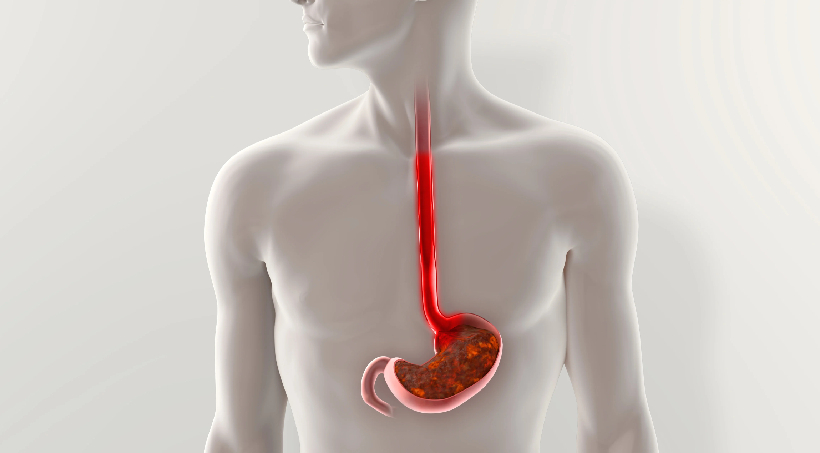- AK Superspeciality Clinic, Unit-208, Kul Scapes, Opposite to Reliance Mart, Tukaram Nagar, Kharadi
- +91 90960 45072

Definition: Upper GI (gastrointestinal) endoscopy, also known as esophagogastroduodenoscopy (EGD), is a procedure that uses a flexible tube with a camera (endoscope) to examine the upper part of the digestive system, including the esophagus, stomach, and the first part of the small intestine (duodenum). It helps diagnose and sometimes treat conditions affecting these areas.
Causes: Upper GI endoscopy is performed for various reasons, including:
- Persistent Heartburn or GERD: To evaluate chronic acid reflux and its effects on the esophagus.
- Unexplained Abdominal Pain: To investigate causes of ongoing upper abdominal pain.
- Nausea and Vomiting: To determine the cause of unexplained nausea and vomiting.
- Swallowing Difficulties (Dysphagia): To check for blockages or abnormalities in the esophagus.
- Suspected Ulcers: To diagnose and assess the severity of stomach or duodenal ulcers.
- GI Bleeding: To identify the source of unexplained bleeding in the upper GI tract.
- Anemia: To investigate chronic blood loss that may cause iron deficiency anemia.
- Screening for Cancer: To screen for esophageal, stomach, or duodenal cancers, especially in high-risk patients.
Symptoms: Symptoms that may prompt an upper GI endoscopy include:
- Heartburn: Persistent burning sensation in the chest or throat.
- Abdominal Pain: Especially if it is persistent or severe.
- Difficulty Swallowing: Feeling of food sticking in the throat or chest.
- Nausea and Vomiting: Unexplained or chronic episodes.
- Unexplained Weight Loss: Significant weight loss without a clear cause.
- Blood in Stool or Vomit: Black, tarry stools or vomit that looks like coffee grounds.
- Anemia: Symptoms like fatigue, weakness, or pallor due to low red blood cell count.
Diagnosing: The procedure itself is the diagnostic tool:
- Preparation: Patients are usually asked to fast for several hours before the procedure.
- Sedation: Mild sedatives are often administered to help the patient relax.
- Procedure:
- The endoscope is gently inserted through the mouth and guided down the esophagus into the stomach and duodenum.
- The camera transmits images to a monitor, allowing the doctor to inspect the lining of the upper GI tract for abnormalities.
- Biopsies (small tissue samples) may be taken if suspicious areas are found.
- Post-Procedure: Patients are monitored until the effects of the sedative wear off, and they can usually go home the same day.
Treatment Options: While primarily diagnostic, an upper GI endoscopy can also be therapeutic:
- Polyp Removal: Small polyps can be removed during the procedure.
- Dilation: Narrowed areas (strictures) can be widened using special instruments.
- Hemostasis: Bleeding areas can be treated with clips, injections, or thermal devices.
- Foreign Object Removal: Objects stuck in the upper GI tract can be retrieved.
- Feeding Tube Placement: In certain cases, a feeding tube can be inserted directly into the stomach.
Prevention Tips: Preventive measures focus on reducing the risk of conditions that may require an endoscopy:
- Healthy Diet: Eating a balanced diet rich in fruits, vegetables, and fiber.
- Avoid Smoking and Excessive Alcohol: Reducing or eliminating smoking and heavy drinking.
- Maintain a Healthy Weight: Reducing the risk of GERD and associated complications.
- Regular Medical Check-Ups: Routine screenings and monitoring of known conditions like GERD or Barrett’s esophagus.
- Prompt Treatment of GI Symptoms: Early treatment of heartburn, reflux, or other digestive issues can prevent complications.
Conclusion: Upper GI endoscopy is a valuable diagnostic and therapeutic tool that allows doctors to visualize and treat issues within the upper digestive tract. It is a minimally invasive procedure that plays a crucial role in diagnosing various conditions, from ulcers to cancer. With appropriate preparation and preventive care, patients can manage symptoms effectively and reduce the need for repeated endoscopies. It is important for individuals experiencing persistent GI symptoms to consult with a healthcare provider to determine if an upper GI endoscopy is necessary.

